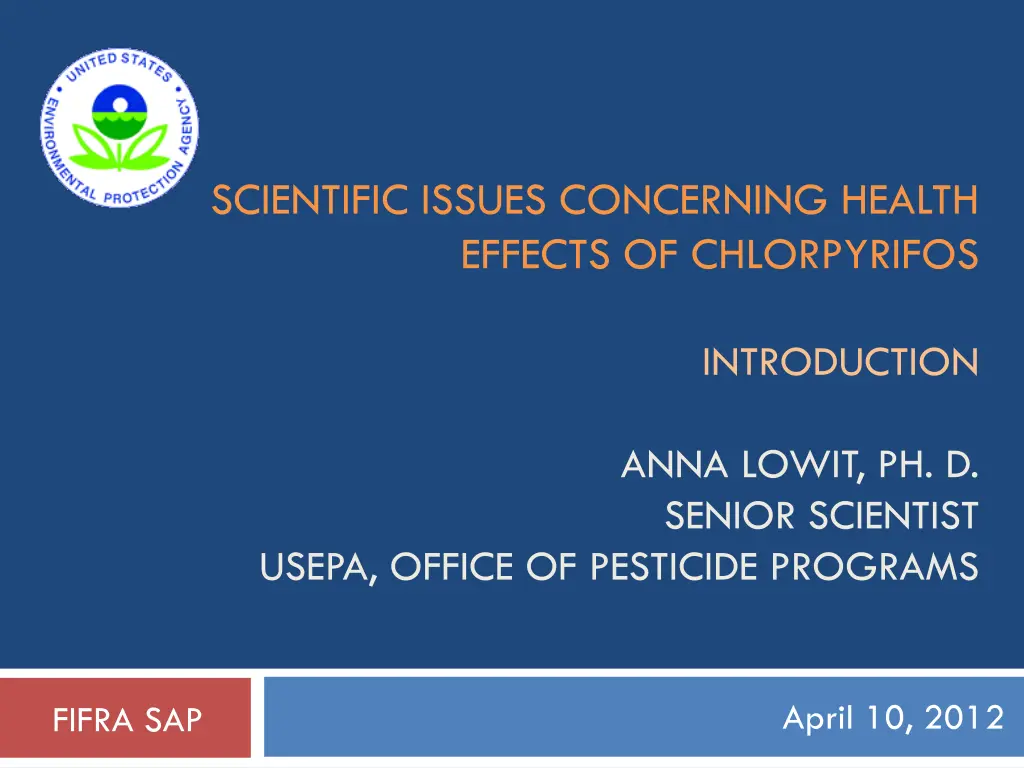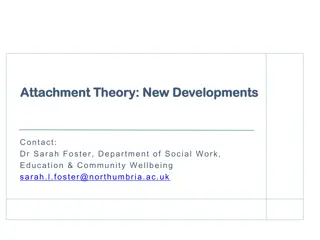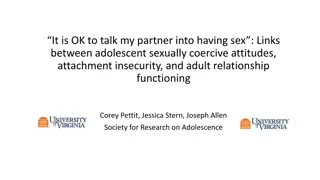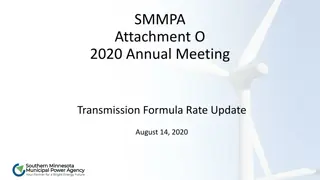
Health Effects of Chlorpyrifos: Scientific Issues and Regulatory Context
Explore the scientific issues and regulatory context surrounding the health effects of chlorpyrifos, an organophosphate pesticide. Learn about key studies, recent reviews, and regulatory actions. Stay informed about the potential risks and mitigation efforts associated with chlorpyrifos exposure.
Download Presentation

Please find below an Image/Link to download the presentation.
The content on the website is provided AS IS for your information and personal use only. It may not be sold, licensed, or shared on other websites without obtaining consent from the author. If you encounter any issues during the download, it is possible that the publisher has removed the file from their server.
You are allowed to download the files provided on this website for personal or commercial use, subject to the condition that they are used lawfully. All files are the property of their respective owners.
The content on the website is provided AS IS for your information and personal use only. It may not be sold, licensed, or shared on other websites without obtaining consent from the author.
E N D
Presentation Transcript
SCIENTIFIC ISSUES CONCERNING HEALTH EFFECTS OF CHLORPYRIFOS INTRODUCTION ANNA LOWIT, PH. D. SENIOR SCIENTIST USEPA, OFFICE OF PESTICIDE PROGRAMS April 10, 2012 FIFRA SAP
Introduction 2 NRC Reports Toxicity Testing in the 21st Century: A Vision and a Strategy (2007): Adverse outcome pathways Integration across multiple lines of evidence Disruption of homeostasis leading to adverse outcomes Science & Decisions (2009): Improved technical analysis (including mode of action) Evaluation of alternative interpretations/approaches Better align risk assessment & risk management Use of improved problem formulation
Regulatory Context: Chlorpyrifos 3 Organophosphate pesticide first registered in 1965 In June 2000: The technical registrants entered into an agreement with the Agency to eliminate and phase out nearly all uses that result in residential exposures Some mitigation on food (apples & tomatoes) Some mitigation for workers (PPE & engineering controls for some uses) Registration Eligibility Decision (RED) in 2006 September 2007 petition from NRDC & PANNA to revoke all tolerances & cancel registrations
Recent SAP Reviews 4 2008: New science on infants, children, & pregnant women from experimental laboratory toxicology & epidemiology studies Evaluated both AChE & non-cholinergic modes of action 2009: Approach for risk assessment of semi-volatile pesticides http://www.epa.gov/scipoly/sap/meetings/2009/120109 meeting.html 2010: Development of the draft Framework for Incorporating Human Epidemiologic & Incident Data in Health Risk Assessment http://www.epa.gov/scipoly/sap/meetings/2010/020210 meeting.html
Regulatory Context: Chlorpyrifos 5 Registration review opened in March 2009 and is expected to conclude by the end of 2015 http://www.regulations.gov/#!docketDetail;D=EPA-HQ-OPP- 2008-0850 July 2011 Preliminary Risk Assessment http://www.regulations.gov/#!documentDetail;D=EPA-HQ-OPP- 2008-0850-0025 Focus on AChE-inhibiting potential Most sensitive dose-response data Weight of the evidence evaluation integrating data from epidemiology, biomonitoring, & experimental toxicology studies to be conducted
2008 FIFRA SAP Review 6 Preliminary review of scientific literature with focus on infants, children & pregnant women Epidemiology Age-dependant metabolism Intra-species variability of paraoxonase (PON1) AChE/ChE inhibition data Various lifestages Multiple routes, durations In vivo rodent studies evaluating long-term effects Biomonitoring studies
2008 FIFRA SAP Review 7 Key recommendations from SAP AChE/ChE data remains the most appropriate data for deriving points of departure Route specific & lifestage-specific AChE/ChE data appropriate In vivo rodent studies on long-term effects from early life exposure Limited dose- response data Only doses of 1 mg/kg or greater demonstrate significant effects on behavior Epidemiology studies: Chlorpyrifos likely played a role Only measuring biomarkers (3rd trimester maternal, cord blood, meconium) at one point in time Cannot exclude possibility that the effects seen were due to chlorpyrifos in combination with other pesticides
Draft Framework for Incorporating Epi 8 Concepts based on peer-reviewed, robust principles & tools Standard practice in epidemiology, toxicology & risk assessment Consistent with recommendations from NRC 2007: Toxicity Testing in the 21st Century NRC 2009: Science & Decisions: Advancing Risk Assessment Flexibility to incorporate information from different sources based on AOP concept Transparent tool for organizing, reviewing & interpreting complex information
Draft Framework for Incorporating Epi 9 Mode of Action Framework (Modified Bradford Hill Criteria) Postulated mode of action Identify sequence of key events on the path to health outcome Experimental support Concordance of dose-response for key events Temporal relationships for key events Biological plausibility & coherence Strength, consistency & specificity Other modes of action Identify uncertainties Conclusion
Adverse Outcome Pathway Structure Activity Relationships 10 In vivo studies In vitro studies Pharmaco- kinetics Molecular Target Cellular Response Tissue/ Organ Chemicals Individual Population Biomonitoring & Exposure data Toxicity Pathways Human Incidents Epidemiology Key events or predictive relationships spanning levels of biological organization Adverse outcome relevant to risk assessment Molecular initiating event Greater Toxicological Understanding Greater Risk Relevance
II. Adverse Outcome Pathways definition and example Exposure Uptake-Delivery to Target Tissues Perturbation Cellular response pathway Normal Biological Function Biologic inputs Early cellular changes Adaptive Responses Cell inury, Inability to regulate Adverse Outcomes (e.g., mortality, Reproductive Impairment) Adverse outcome relevant to risk assessment Molecular initiating event Perturbed cellular response pathway Toxicity Pathway Adverse Outcome Pathway Modify From NRC 2007
July 2011 Preliminary Risk Assessment 12 AChE/ChE inhibiting potential of chlorpyrifos Most sensitive dose-response data available Route specific studies (oral, dermal, inhalation) Lifestage sensitivity Process for deriving points of departure In 2008, the Agency performed a comprehensive review of the literature for AChE inhibition. 2012 review has been supplemented with the newest data Benchmark dose approach
July 2011 Preliminary Risk Assessment 13 AChE/ChE inhibiting potential of chlorpyrifos Acute, oral: BMDL10 0.36 mg/kg for RBC AChE inhibition PND11 rat pups provide the most sensitive cholinesterase inhibition data Consistent with the concept that younger juvenile animals are more sensitive due to immature metabolic systems Chronic, oral: BMDL10 0.03 mg/kg/day for RBC AChE inhibition As the metabolic systems mature at or near adult levels, sensitivity disappears In repeated dosing studies, pups exhibit similar sensitivity to adult rats Pregnant dams provide the most sensitive data
April 2012 14 Key scientific questions 1. Lines of evidence that suggest chlorpyrifos exposure results in long-term neurodevelopmental effects from early life exposure 2. Lines of evidence that adverse effects may be attributed to doses lower than those which elicit 10% inhibition of AChE, i.e., the dose levels previously used for regulatory decision making
April 2012 15 Compared to 2008, 2012 analysis incorporates new data available and/or provides more in-depth analysis AChE/ChE inhibition Other mechanistic data----Evaluation of plausible hypotheses on modes of action/adverse outcome pathways (MOA/AOP) leading to neurodevelopmental outcomes Adverse outcomes in rodents, including neurodevelopmental studies on behavior and cognition effects. Epidemiologic studies from three major children s health cohorts in the U.S. Biomonitoring and physiologically-based pharmacokinetic/pharmacodynamic (PBPK/PD) modeling
2007 NRC Toxicity Testing in the 21st Century Dose Response Assessment Chemical Characterization Mode of Action Population Based Studies Compounds Affected Pathway Dose Response Analysis for Perturbations of Toxicity Pathways Calibrating in vitro and human Dosimetry Exposure Guideline Assess Biological Perturbation Measures of dose in vitro Metabolite(s) Human Exposure Data Hazard Characterization Exposure Assessment Risk Characterization NRC, 2007. Fig 3-7 Risk Assessment Components
Pathway of Exposure Critical Duration Lifestage MOA/AOP Critical duration: from 1 day to time of metabolic maturation AChE inhibition Cholinergic toxicity Direct exposure in food, water, air from volatization/spray drift, Infants & Toddlers Neurodevelopmental outcomes in children (learning & motor deficits) MOA: Unknown; Multiple Hypotheses Critical duration: Unknown. Direct exposure in food, water, air from volatization/spray drift, worker (applicator, post app) Critical duration: from 1 day up to steady state (approx 2-3 weeks) with a max exposure of 9 mos Mother AChE inhibition Cholinergic toxicity Pregnant Female Equal or less sensitive to mother; protect for mother s AChE inhibition protect for fetus Critical duration: from 1 day up to 9 months AChE inhibition Cross-placental exposure Fetus Neurodevelopmenta l outcomes in children (learning & motor deficits) MOA: Unknown; Multiple Hypotheses Critical duration: Unknown.
Outline of Presentations 18 Introduction (Anna Lowit) Adverse Outcome Pathways: Data for Chlorpyrifos at Varying Levels of Biological Organization (William Mundy) Chlorpyrifos Effects on the Developing Brain: Animal Studies (Virginia Moser) Review of Children s Health Epidemiology Cohort Studies (Carol Christensen) Review of Chlorpyrifos Biomonitoring Research and Interpretive Approaches (Aaron Niman) Summary & Next Steps (Anna Lowit)
Questions? 19






















